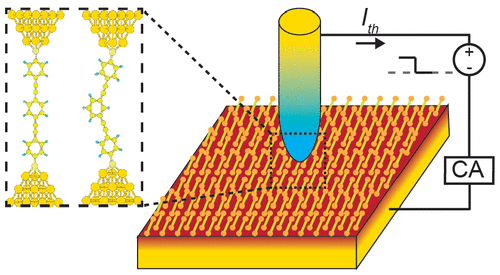当前位置:
X-MOL 学术
›
Nano Lett.
›
论文详情
Our official English website, www.x-mol.net, welcomes your
feedback! (Note: you will need to create a separate account there.)
Influence of Quantum Interference on the Thermoelectric Properties of Molecular Junctions
Nano Letters ( IF 9.6 ) Pub Date : 2018-08-07 00:00:00 , DOI: 10.1021/acs.nanolett.8b02207
Ruijiao Miao 1 , Hailiang Xu 2, 3 , Maxim Skripnik 4, 5 , Longji Cui 1 , Kun Wang 1 , Kim G. L. Pedersen 6, 7 , Martin Leijnse 2, 8 , Fabian Pauly 4, 5 , Kenneth Wärnmark 2, 3 , Edgar Meyhofer 1 , Pramod Reddy 1, 9 , Heiner Linke 2, 8
Nano Letters ( IF 9.6 ) Pub Date : 2018-08-07 00:00:00 , DOI: 10.1021/acs.nanolett.8b02207
Ruijiao Miao 1 , Hailiang Xu 2, 3 , Maxim Skripnik 4, 5 , Longji Cui 1 , Kun Wang 1 , Kim G. L. Pedersen 6, 7 , Martin Leijnse 2, 8 , Fabian Pauly 4, 5 , Kenneth Wärnmark 2, 3 , Edgar Meyhofer 1 , Pramod Reddy 1, 9 , Heiner Linke 2, 8
Affiliation

|
Molecular junctions offer unique opportunities for controlling charge transport on the atomic scale and for studying energy conversion. For example, quantum interference effects in molecular junctions have been proposed as an avenue for highly efficient thermoelectric power conversion at room temperature. Toward this goal, we investigated the effect of quantum interference on the thermoelectric properties of molecular junctions. Specifically, we employed oligo(phenylene ethynylene) (OPE) derivatives with a para-connected central phenyl ring (para-OPE3) and meta-connected central ring (meta-OPE3), which both covalently bind to gold via sulfur anchoring atoms located at their ends. In agreement with predictions from ab initio modeling, our experiments on both single molecules and monolayers show that meta-OPE3 junctions, which are expected to exhibit destructive interference effects, yield a higher thermopower (with ∼20 μV/K) compared with para-OPE3 (with ∼10 μV/K). Our results show that quantum interference effects can indeed be employed to enhance the thermoelectric properties of molecular junctions.
中文翻译:

量子干涉对分子结的热电性质的影响
分子结为控制原子级的电荷传输和研究能量转化提供了独特的机会。例如,已经提出了分子结中的量子干扰效应作为室温下高效热电功率转换的途径。为了实现这一目标,我们研究了量子干涉对分子结的热电性质的影响。具体而言,我们使用了具有对位连接的中心苯环(para -OPE3)和间位连接的中心环(meta的低聚(亚苯基乙炔)(OPE)衍生物-OPE3),它们都通过位于其末端的硫锚定原子与金共价结合。与从头算模型得出的预测一致,我们对单分子和单分子层的实验均表明,与对-OPE3相比,预期具有破坏性干扰作用的间-OPE3连接产生更高的热功率(约20μV / K)。(〜10μV/ K)。我们的结果表明,确实可以采用量子干涉效应来增强分子结的热电性质。
更新日期:2018-08-07
中文翻译:

量子干涉对分子结的热电性质的影响
分子结为控制原子级的电荷传输和研究能量转化提供了独特的机会。例如,已经提出了分子结中的量子干扰效应作为室温下高效热电功率转换的途径。为了实现这一目标,我们研究了量子干涉对分子结的热电性质的影响。具体而言,我们使用了具有对位连接的中心苯环(para -OPE3)和间位连接的中心环(meta的低聚(亚苯基乙炔)(OPE)衍生物-OPE3),它们都通过位于其末端的硫锚定原子与金共价结合。与从头算模型得出的预测一致,我们对单分子和单分子层的实验均表明,与对-OPE3相比,预期具有破坏性干扰作用的间-OPE3连接产生更高的热功率(约20μV / K)。(〜10μV/ K)。我们的结果表明,确实可以采用量子干涉效应来增强分子结的热电性质。































 京公网安备 11010802027423号
京公网安备 11010802027423号